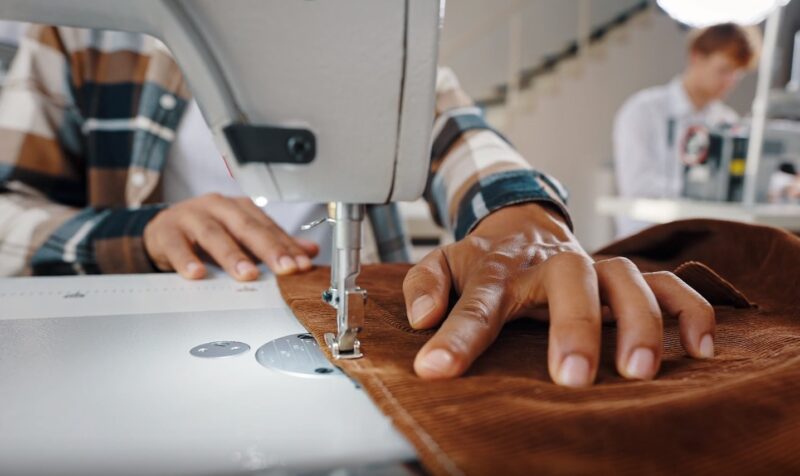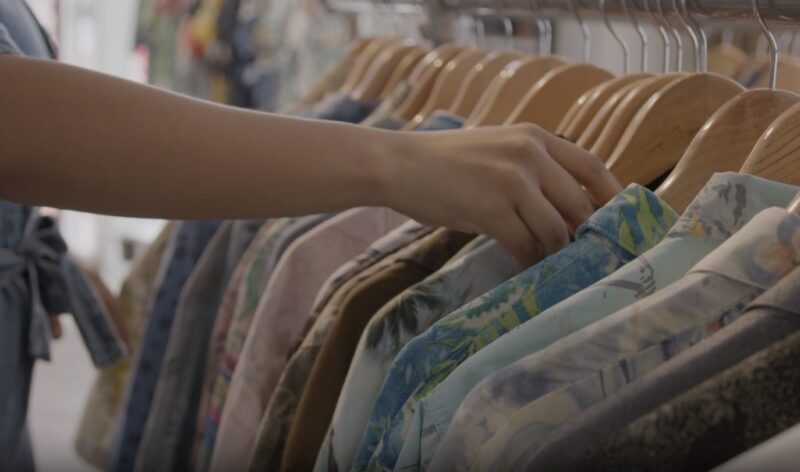The term “fast fashion” has become synonymous with the rapid production and consumption trends in the fashion sector. This whirlwind pace, while bringing the latest styles to consumers at affordable prices, has also cast a dark shadow on our environment.
The textile industry, responsible for 20% of global wastewater and 10% of global carbon emissions, is the second most polluting sector after the oil industry. The life cycle of a garment in this fast-paced world is a tale of raw materials, processing, and the eventual disposal of the product. Let’s delve into the first three stages of this journey.
1. Raw Material

The foundation of any garment lies in its raw materials. These materials, each with their unique ecological footprint, determine the environmental impact of the garment.
Cotton
Cotton, a staple in the fashion industry, has a two-fold environmental impact. Firstly, its cultivation demands vast amounts of water. To put it into perspective, producing a single T-shirt and a pair of jeans requires as much water as one would consume in 13 years of drinking. Secondly, the extensive use of pesticides in cotton farming disrupts the ecological balance, posing health risks to farmworkers and nearby communities.
- Water Consumption: One kilogram of cotton requires 20,000 liters of water.
- Pesticides: Chemicals used in cotton farming can contaminate water, soil, and air, posing health risks.
Polyester
Unlike cotton, polyester is a synthetic material derived from petroleum. Its production contributes significantly to carbon emissions. Moreover, washing polyester garments releases microplastics into the water, which eventually find their way into marine ecosystems and our food chain.
- Carbon Footprint: Being petroleum-based, polyester’s carbon emissions are alarmingly high.
- Microplastics: Tiny plastic fibers shed from polyester garments, threatening marine life and human health.
2. Processing of Raw Materials

Once the raw materials are sourced, they undergo various processing stages, each with its environmental implications.
Washing and Dyeing
The textile industry often employs toxic substances like mercury, chromium, and lead in the washing and dyeing processes. One such chemical, Nonylphenol Ethoxylates (NPE), can cause burns and fertility issues. While Europe has implemented regulations like the REACH Regulation to curb the use of such toxins, many developing countries still lack stringent guidelines.
- Toxic Chemicals: Harmful substances used in textile processing can leach into the environment, posing health risks.
- Regulations: While some countries have strict regulations, many still lag behind in ensuring safe textile processing.
Transportation
The journey of a garment is not just from the factory to the store. Consider a pair of trousers: the cotton might be grown in Uzbekistan, processed in India, dyed in Morocco, and finally sold in France. This garment travels approximately 65,000 km, equivalent to half a world tour. The carbon footprint of such extensive transportation is staggering.
- Distance Covered: A garment can travel half the globe before reaching the consumer.
- Carbon Emissions: The cumulative greenhouse gas emissions from production and transportation are immense.
3. Recycling

The end of a garment’s life cycle doesn’t necessarily mean the end of its environmental impact. The disposal of garments poses another set of challenges.
Landfills
Annually, consumers discard 31.75 kilograms of clothing, leading to a global textile waste of 13 million tons. A staggering 80% of this waste ends up in landfills or is incinerated. In landfills, these garments can take over 200 years to decompose, releasing harmful methane gas in the process.
- Waste Generation: The global textile waste is alarmingly high, with a majority ending up in landfills.
- Environmental Impact: Decomposing garments release methane, a potent greenhouse gas.
Reuse and Regeneration
The silver lining is the 20% of discarded garments that are either reused or recycled. Various initiatives worldwide collect textile waste for recycling or repurposing. However, there’s still a long way to go in promoting sustainable disposal methods and raising environmental awareness.
- Recycling Initiatives: Collection bins and recycling projects aim to reduce textile waste.
- Awareness: A holistic approach to textile recycling and increased environmental consciousness are crucial for a sustainable future.
FAQ
What is the difference between fast fashion and sustainable fashion?
Fast fashion focuses on rapid production to get the latest styles to the market quickly and at a low cost. Sustainable fashion emphasizes environmental and social responsibility, prioritizing long-lasting quality, ethical labor practices, and eco-friendly materials.
How can consumers make more sustainable fashion choices?
Consumers can opt for quality over quantity, support brands that use sustainable materials, buy second-hand, recycle or upcycle old clothes, and reduce overall consumption.
Are there any eco-friendly alternatives to traditional dyes used in the textile industry?
Yes, natural dyes derived from plants, minerals, and even insects offer eco-friendly alternatives to synthetic dyes. They tend to have a lower environmental impact.
How does fast fashion impact local artisans and traditional fashion industries?
Fast fashion often undercuts local artisans by offering cheaper, mass-produced alternatives. This can lead to a decline in traditional crafts and loss of income for local communities.
Are there certifications to look for when shopping for sustainable fashion?
Yes, certifications like Global Organic Textile Standard (GOTS), Fair Trade, and OEKO-TEX can indicate a brand’s commitment to sustainable and ethical practices.
Final Words
The allure of fast fashion is undeniable: trendy styles at affordable prices. However, the hidden costs to our environment and society are substantial. As consumers, understanding the life cycle of our garments and making informed choices can lead to a more sustainable and ethical fashion industry. Every purchase decision is a vote for the kind of world we want to live in.
